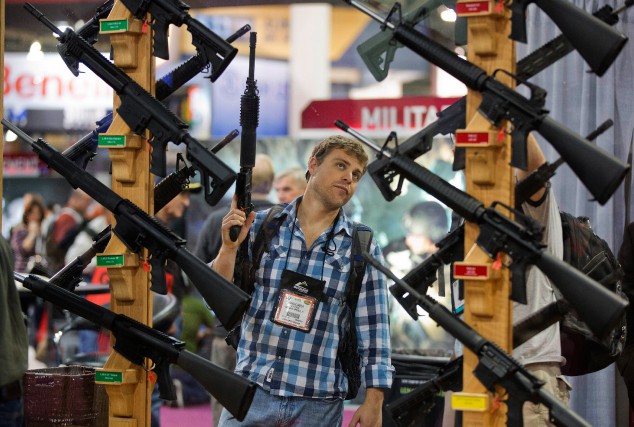
A Free Man Is an Armed Man
For most Quebecois, this statement arises from magical thinking. But the idea is deeply rooted in the history and collective unconscious of Americans. That is why this country, hit by tragedies related to firearms, insists on defending the Second Amendment of its Constitution, written in 1791: “A well-regulated Militia, being necessary to the security of a free State, the right of the people to keep and bear Arms, shall not be infringed.”
Despite the 30,000 annual deaths related to firearms (homicides, suicides and accidents combined), firearm regulation remains impossible. Although in recent years, legal experts have recognized that “intelligent discussion” around solutions to reduce violent crime in the United States should be encouraged, the Supreme Court has always refused to touch the Second Amendment.
Beyond laws and culture, there are politics. And lobbies. On the one hand, the powerful pro-gun lobby of the National Rifle Association (4.5 million members) blocks Washington’s least measure of control. With each tragedy, the association trots out its slogan: “Guns don’t kill people, people kill people.”
On the other hand, arms control activists dream of an unarmed nation. A pipe dream. This country built itself around the notion of heroism. From the sheriff to the vigilante, by way of soldiers, the nation’s pride chants “Support our troops!”
The gun is part of American mythology. It is no coincidence that there is nearly one weapon per capita, with 300 million pistols, shotguns, rifles and other hunting weapons. Despite the tragedies and repeated massacres, the United States is deadlocked. And the debate always begins again. What can be done?
When both parties are at a dead end, the solution is not antagonism, much less hostility.
Rather, one must trust the good faith of the other side and put a little water in the wine. If the proponents of gun control want the NRA to make compromises, they also must do so.
For example, stop alienating the millions of citizens who own guns and who use them responsibly for hunting or shooting sports. In contrast, those who promote weapons must accept certain compromises, such as preventing vulnerable people with mental health issues from obtaining guns. It’s a start.
In the aftermath of the murder of two journalists from Virginia, a New York Times columnist drew a parallel between weapons and cars. Forty years ago, people drove without seat belts, a beer between their legs, without worrying about speed limits. Since then, new laws have circumscribed driving in North America. If traffic deaths could be reduced, so, too, should we be able to curb violence associated with firearms.

Leave a Reply
You must be logged in to post a comment.